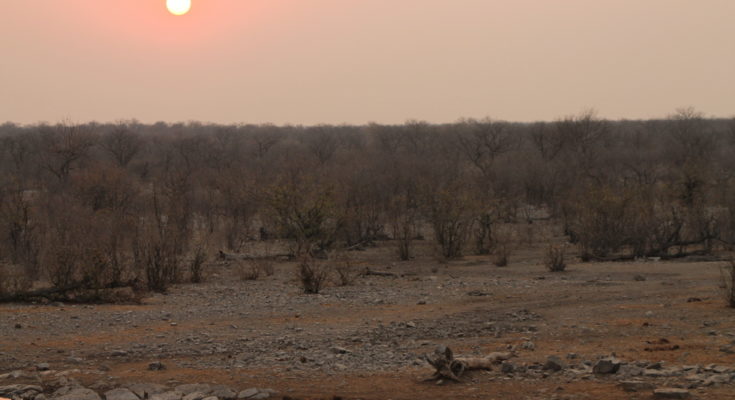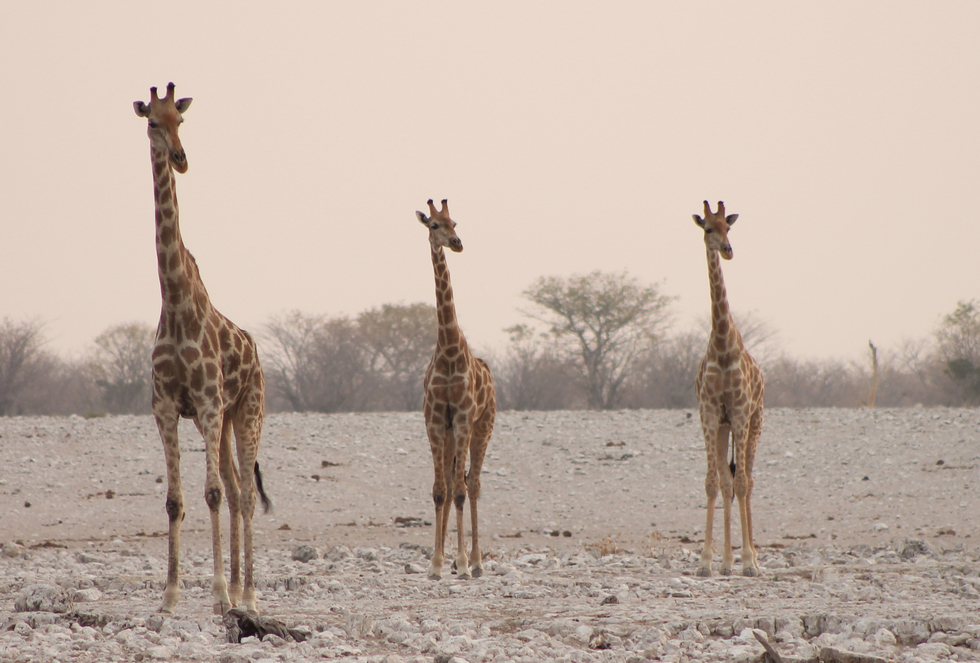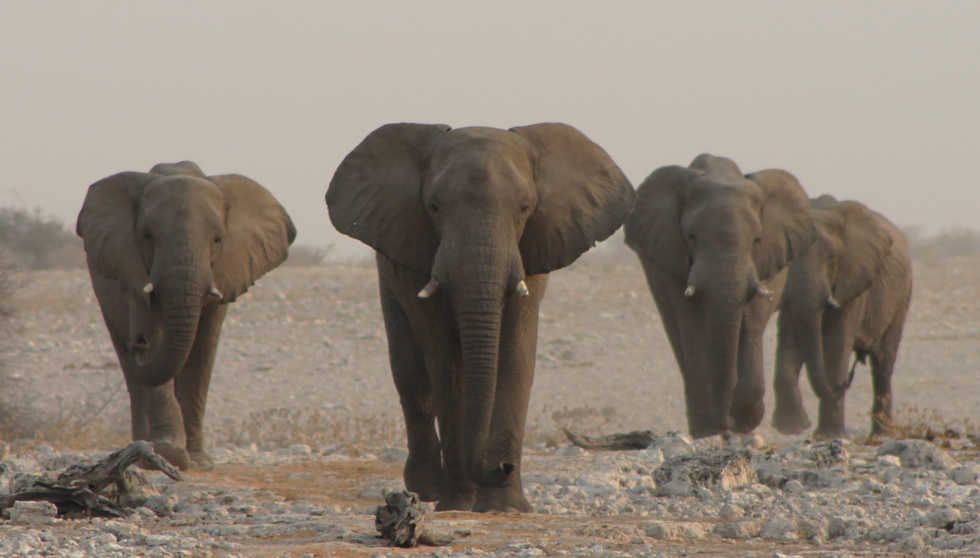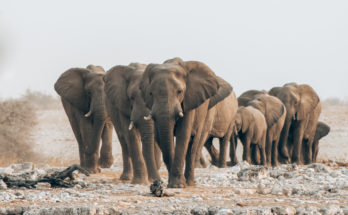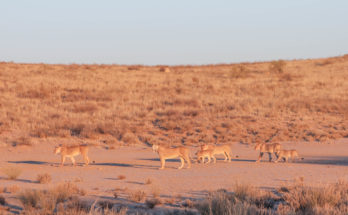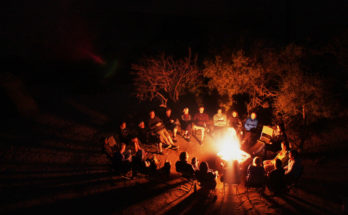Situated in the northwest of Namibia with its wide open spaces, little bush to hide animals and the highest number of leopard in any national park in Africa, Etosha National Park is any nature or wildlife photographer’s heaven. Named after the Oshindonga word meaning great white place in reference to the massive salt pan in the north of the park, Etosha is home to hundreds of species of mammals including some endangered ones, like the heavily poached black rhino. It is the most visited tourist attraction in Namibia, with more than 250 000 tourists and travelers from around the world flocking to Etosha every year.
Most visitors enter through the Anderson Gate, the closest entry point to the biggest and most popular camp, Okaukuejo. Rest camps in Etosha are quiet, clean and comfortable. The extremely hot conditions in the area with summer temperatures exceeding 45 °C and long dry seasons concentrate wildlife around watering holes, many of them man-made and close to rest camps. Tourists can relax under shaded seating while watching the amazing creatures of Africa come for a refreshing drink, including the African bush elephant found in north-western Namibia. They are the tallest off all elephants but because of the limited vegetation available for them to feed on, they suffer from mineral deficiencies and thus have very short tusks.
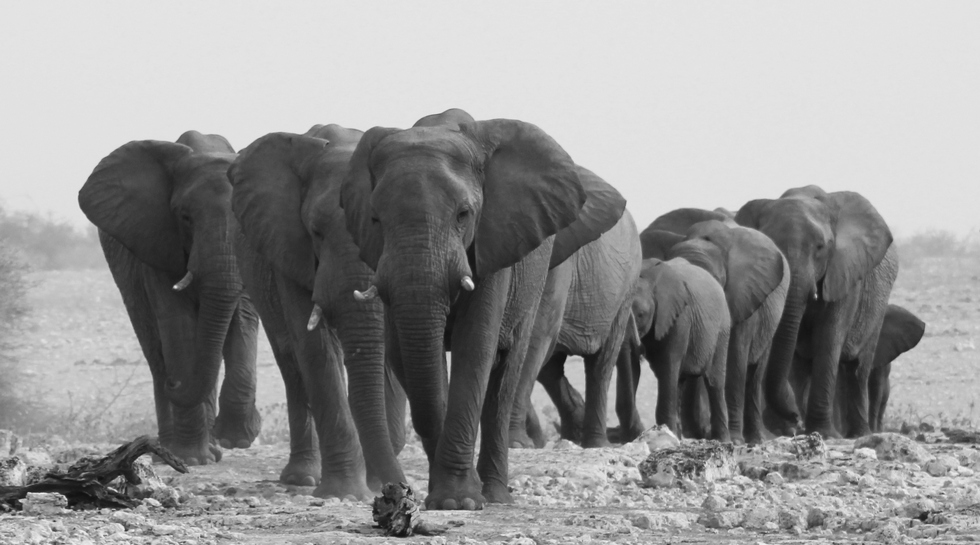
Driving with African air conditioning (read: wide open windows) is a must in Etosha as nothing prepares you for the heat. Dusty planes dotted with elephants, black-backed jackal, zebra, springbok, steenbok, oryx, red hartebeest, blue wildebeest, lions, leopards, the occasional ostrich and scarcely any vegetation allow for fantastic game viewing and photo opportunities.
Halali is another beautiful campsite in the center of the park and is surrounded by a few hills. The thicker vegetation makes the area popular for elephants, rhino and the ever elusive leopard. A waterhole a few meters from the campsite built in such a way to view wildlife from a close without disturbing them is the perfect location for a few sundowners and as it is floodlit, it gives those willing to sacrifice sleep and blood to hungry mosquitoes the opportunity to observe and photograph nocturnal wildlife into the early hours of the morning. However, be prepared to be very quiet with almost no talking as serious game viewers are not scared to send dirty looks or complain about noisy campers to park management. Etosha is also a malaria area, so be sure to take prophylaxes medication and use quality insect repellent.
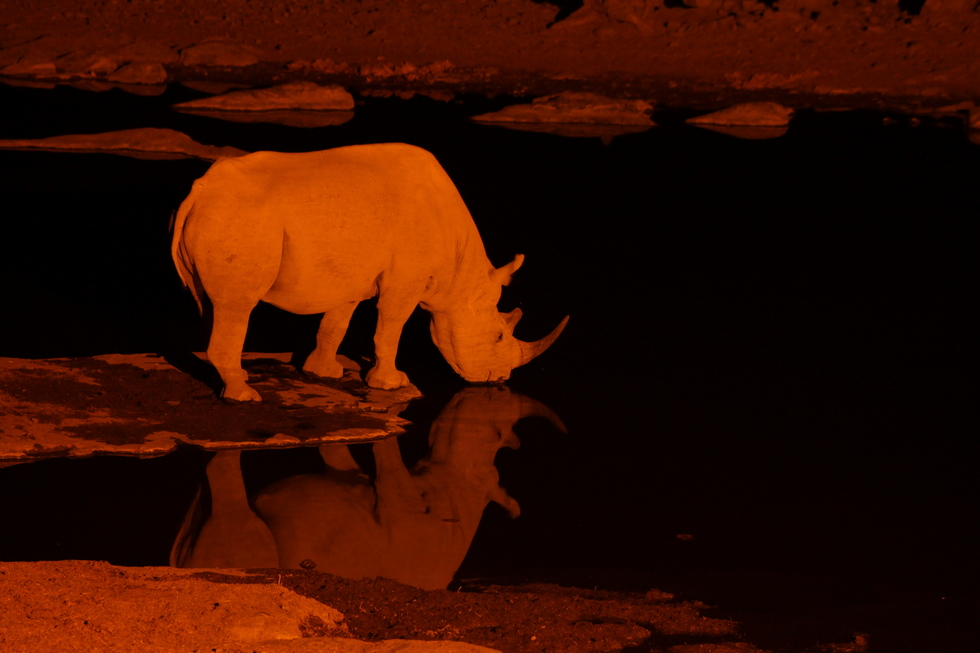
The great white pan which Etosha is named after stretches as far as the eye can see. For 4 760 square kilometers to be exact. The salty clay pan covers about 23% of the national park and looks like a scene straight from the moon. Everything is white, powdery and much of a nothingness. It is one of the highlights when visiting the park and visitors are able to leave game viewing vehicles to walk on the crunchy surface when the pan is dry and free of animals.
Having traveled almost 2 300 km, covering the distance from Sydney to Cairns or London to Athens, the drive from Cape Town to Etosha took 11 days on tarmac roads, dirt roads or no roads at all. Namibia got its name from the Khoekhoe ‘click’ language, meaning the land of open spaces or the vast place, and it turned out to be exactly those things. It is one of the most beautiful but trying routes and I believe Namibia is one of the last true wildernesses of the world. Where else can one drive for an entire day and only see one other car? Or go camping with not a single other person around for maybe hundreds of kilometers, with no electricity and only a (very stinky!) long drop toilet? A place where you can see untouched wildernesses and abundant wildlife existing in exactly the same way they did many centuries ago? Places like Namibia are getting fewer by the day.
Driving across two countries on countless dirt roads in an overland truck is an experience every traveller should undergo. It’s noisy, bumpy and hot. Camping was a big part of my travels through Namibia and even though hotels and bungalows are popping up at an alarming rate, staying close to nature is what made it for me. It was cold showers, sunscreen, headbands and buffs, lip ice, dirty hair and putting up camp. I learned the value of free wifi at stops on the way, what it stole from me and how much of the world we miss with our noses stuck to our cell phones. I finally understood the true power of baby wipes and how to value shade during the heat of the day. When I returned home and after my first (hour long) bath my glorious African tan turned out to be a layer of dust, I knew I’d done something right.
To get the full story of my journey, please go read Driving from Cape Town to Etosha Part 1 and Part 2.

